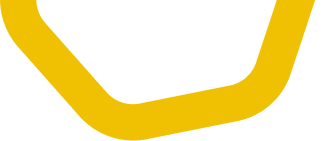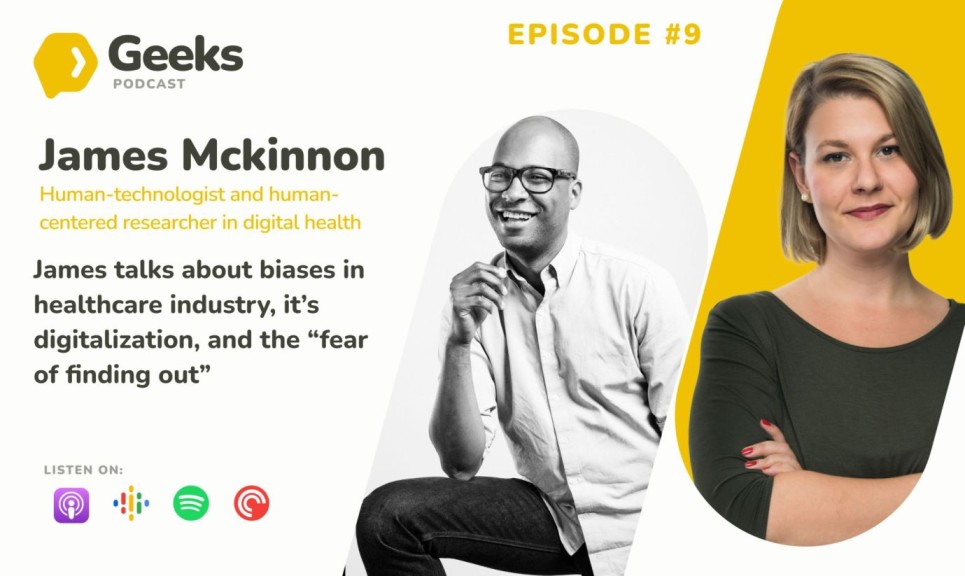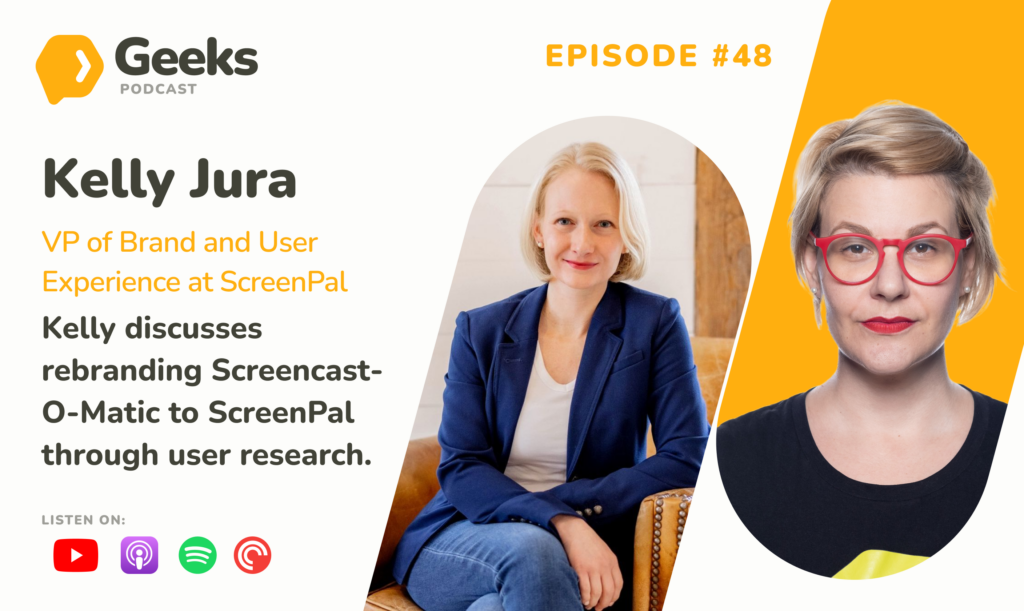👉 Note: This conversation is based on our Dealing with Resistance in UX Research report.
Episode highlights
- 00:01:36 – Meet the Head of Growth at UXtweak
- 00:01:48 – Challenges in UX research
- 00:04:52 – Common objections and their impact
- 00:07:55 – Top objections to UX research
- 00:10:16 – Best strategies to overcome objections
- 00:14:43 – Tips for effective UX research
- 00:28:51 – Leveraging AI in UX research
About our guest Tadeas
Tadeas Adamjak is a CX/UX consultant and Head of Growth at UXtweak, a UX research platform that supports hundreds of research, product, and design teams worldwide.
He is also one of the team members behind industry initiatives such as:
⬣ Dealing with Resistance to UX Research [Report]
⬣ Research Recruities: Award for the Best Recruiting Stories
Podcast transcript
[00:00:00] Tina Ličková: Welcome to UXR Geeks, where we geek out with researchers from all around the world and topics they’re passionate about. I’m your host, Tina, a researcher and a product manager, and this podcast is brought to you by UXtweak, the UX research platform for recruiting, conducting, analyzing, and sharing insights all in one place.
This is UXR Geeks, and you are listening to a conversation that I was leading with Tade, who is the Head of Growth of UXtweak, and we were talking about the objections to research based on a study that UXtweak was running. We were diving into the study on the most common objections to research. Think Too slow, too pricey, or the classic ’cause we already know our users and how to actually overcome them.
So tune in and enjoy it.
I know we’ve been out with some specials in the last weeks, but we have another special, I’m talking to my colleague Tadeas, who’s the head of growth with UXtweak, and the reason why I’m talking to you is that finally somebody was listening to me and came, oh, we wanna talk about the study that we made because UXtweak is doing a lot of studies.
So Tadeas, who are you and what are we going to talk about in your perspective?
[00:01:35] Tadeas Adamjak: Hi Tina thank you for having me. I’m the head of growth at UXtweak, a UX research platform. In my free time, I do a bit of a UX slash CX consulting, and the reason that I’m here is that apart from our research studies, we also do some reports or some deep dives into some topics.
And one of the things that we have been constantly hearing from our clients is that they’re facing some resistance to UX research. We heard objections too slow, too expensive, things like that. We wanted to actually see if this is a problem that the whole industry has and what are some implications. We have this fortunate position that we work with lot of research teams, and it’s also quite a wide range of research teams.
So some of them are just starting the research practices. So they hired the first UX researcher, they’re starting up, and some of them really big corporations or enterprises with higher UX maturity. And we wanted to see, okay, so what are the problems that they’re facing and what are the hardest to overcome objections that they have and what they’re doing about it and it’s working for them.
So for that, we did this report. We surveyed our clients, the community, and talk to some UX experts. That’s why here I would like to talk a bit about this topic. Yeah, I hope it’ll be valuable for the listeners. Yeah,
[00:02:57] Tina Ličková: I hope so too. But before we start, when I saw this study, I had this moment of like, why are you doing this?
We had intellectual disputes about it before this recording. In my experiences that. There are objections from a freelance perspective of clients do research. I was surprised to see that folks have so many objections. You also very nicely mentioned, yeah, there are real, of course the study just is a great proof.
Yeah, there are a lot of objections in the companies, but you also pointed out maybe there’s a moment to. Go silent or step back and find out, oh, do we really need that research? Yeah. Before trying to negotiate with somebody if you need a research. Could you tell me more about that?
[00:03:45] Tadeas Adamjak: Sure. The response here depends, right?
[00:03:49] Tina Ličková: That’s, that’s, it was an inside joke. Now it’s, oh, so much cliche that it’s again, an insider joke.
[00:03:56] Tadeas Adamjak: Yeah, yeah, yeah. Or maybe something more helpful here is that there are differences. You are coming from the user. Research consultant. So people coming to you usually have need for research. They know that we need to get this done and we are trying to find a person that is qualified for that.
So I would definitely say it’s one or it is a bit different. And again, one of the things it depends on is of course, the UX maturity. But what we were actually surprised to see is that. This is very widespread. The objections to research. We of course segmented the data by seniority of the people we interviewed, by the type of the companies, by the size, of course, by the roles.
And it wasn’t something like, Hey, in this type of companies, there is no resistance. What showed up was that the, the objections those professionals are facing. Different to answer, how frequent is the resistance to UX research? We were asking people to rate resistance on a one to seven like it scale, and more than 60% of respondents rated is as five or higher on the seven point.
So very high. And actually what is, uh, is for me, much more alarming or problematic is that less than 3% of participants. Told us they never face objections. So 97% of the responds we talk to are facing objections. The sort of takeaway here is that the objections are very frequent and moderate to high. Of course, it changes as you progress in your career or as you change companies or sizes or as the UX maturity grows.
But you are then running into little bit different problems, right? So first, of course, like maybe you have to explain the value because nobody understands, right? And later on, when everybody understands, which I mean I envy you. If you have that, that position there, then you’re facing like resistance to change.
People have do, we always did it this way, right? I think everybody heard that. That’s what’s. We see, or what the data tells us and the conversations we have with our clients.
[00:06:08] Tina Ličková: I’m just thinking of one point before we dive deeper. Sure. I’m not a person who likes very specific definitions, but when we talk about objection, do we talk about, and I’m aware this is a leading question, is it objection on we don’t wanna do research?
Or is it the objections? We wanna do research in a different way.
[00:06:31] Tadeas Adamjak: We aimed question like, you wanna do research or, or maybe you wanna start a function because you don’t have it in your company. Of course. Depends on, on the respondent there. You all say, okay, let’s do use research and people are going to tell you I’m not sure because, and those are the reasons
[00:06:48] Tina Ličková: an objection.
Interesting.
[00:06:50] Tadeas Adamjak: Yeah. But maybe an interesting point that I have for you there is that when we were talking about the most commonly faced objections, one of the things that is there, or that came up of course, skepticism, but there was also a methodological disputes that was answered by a little bit more than 5% of people.
So even that definitely is, and it showed up in the, the report we did. So yeah. Even in the companies where they use maturities higher. And we are doing research. There are stakeholders that maybe challenge, I’m skeptic of the outcomes or I’m skeptic of the mythology you used. So probably again, the thing that everybody here but you only talk to six people or is this statistic valid?
[00:07:33] Tina Ličková: That’s something probably belong to every researcher, no matter their. Okay, so let’s dive deeper because when you are describing like this, I start to understand more what these objections are about. And of course I face, I’m facing it and I face it. I was facing it when I was employed. Maybe what is the, when we say the biggest three objections?
[00:07:54] Tadeas Adamjak: Sure. Okay. According to our respondents, the most commonly phased objections to research. So number one, a little more than 18% of participants mention product schedule impact. So yeah, something we could translate. Research is too slow or the worry, it’s going to slow down our processes, our things there.
The second is budget constraints translated as research is too expensive or this worry that, yeah, this is going to cost too much. This was mentioned by around 15% of people we surveyed, and the third one is resistance to change. Again, we always done it this way, or this is we know our customer. So things like that.
The fourth one mentioned by almost 14% is stakeholder disinterest. So yeah, people don’t care. Their stakeholders are not interested in what you have to say. And if we are talking about top five, then the fifth one would be stakeholders misalignment. So there’s some internal conflicts like what we have to do.
What are the priorities? That can of course influence or you can do research when you dunno what to research. That’s when we are talking about the most common objections.
[00:09:07] Tina Ličková: We’ll be a right back after a short break with a commercial message from our sponsors. Hey, UXR Geeks. You know this podcast is brought to you by UXtweak.
I’ve tried several UX research tools before and most item make recruitment a nightmare. Or overcomplicate the analysis next week is the first one that actually does both. Well, I can recruit participants from over 130 countries with solid quality checks and detailed profiling, and it supports both moderated and unmoderated studies and analyzing results doesn’t feel overwhelming.
It just makes my research smoother. So if you’re curious, go to UXtweak.com website and start for free. No credit card and no strings attached.
But in your opinion is nowadays maybe the most dominant, I dunno if most dominant is even a word, but Yeah.
[00:10:15] Tadeas Adamjak: So from our data, the hardest to overcome maybe, or that’s what we ask about is one of the questions we have. The number one was resistance to change. Folks, if you do innovation consulting, things like that, changing things, you are familiar with resistance to change.
The second hardest to overcome is budget constraints. So yeah, of course we have limited budgets. Even now, no budgets are getting cut and we have to make to with what we have. The third is product schedule impact. So there’s a big overlap with the most commonly faced objections and those hardest to overcome.
The difference is there that the most commonly faced was product schedule impact. And the hardest to overcome is resistance to change. That’s what the people we talked to reported to us. Resistance to change is, of course, this be more general. It can even overlap with some of the other ones that are there.
But I see myself even when doing some new projects, if you have people you know that are used to do things a certain way. It’s very hard to change their behavior. You have to do a lot of convincing, buying lunches, coffees, and sitting down with people. That’s what I, I would say maybe some interesting ones we catch on mythological disputes.
I was surprised to see that there.
[00:11:34] Tina Ličková: That’s a oldie goalie
[00:11:35] Tadeas Adamjak: of, yeah. Yeah, definitely. Interestingly, it’s not hard to overcome chronic to what we collected. Less than 3% choose this option with advancements in UX maturity and you know that we know more about this, people are able to overcome this much more easily than it probably was.
[00:11:54] Tina Ličková: And I think everybody who is a little more senior, but it might be interesting for more junior folks, is that if you are having a methodological dispute, it might be a link to resistance to change. It’s the part where people still want to. Or are able to accept the change if you give them good arguments.
The usual thing is, oh, I wanna make a survey. That’s Goldie, right? Yeah. And you’re like, yeah, okay. Let’s talk. What do you wanna learn? You can guide the person, oh, it’s great that you want to learn this, but definitely survey is not the right tool for it, and why not? Yeah. One thing. It’s a definition thing for me.
Yeah. Product schedule impact. It’s schedule and impact, and I know they’re both playing with each other, but there is, for me, it contains priorities. If you could go a little bit deeper into that one, because I am maybe hypothesizing that it’s the typical Oh, but it’s too slow, but it seems also linked to other things.
[00:12:55] Tadeas Adamjak: Yeah. The risk is too. So the most final reason there, or that’s the. Why people chose this so that their stakeholders have the view that research is going to negatively impact their product schedule. So meaning our product launches or features will be delayed. This is what, what is the, I would say the concern there, it’ll delay the process, but of course I would say this comes up to a more high level problem or like problem that is a little bit even up the level is that.
It’s again about the understanding this is going to negatively impact the timeline. Don’t understand the value of research because they do not view it as a strategic partner for the product, and they view it as an after fort or like a nice additional layer we can do. Yeah. If we have some time, let’s validate, I guess this is the word that we hear often and we don’t like to hear.
It’s we validating instead of driving the change or impacting the strategy. So that’s why when I’m actually talking about some strategies or like tips, tactics to overcome resistance, I’m grouping into three categories, understanding. Communication and persistence. Those are the three things you need to have in place.
Or you as a researcher or of course as A-P-V-D-R or designer, whoever you are, and you are working with or doing research. I think those are three things that you, I would recommend that having or understand that this is a part of your role, whether you want it or not, from what we see, and of course, this is my personal opinion.
You need to do this because you are going to have a hard time proving your value, having an impact. Of course, you might be lucky that you will be working for an organization where the US maturity is super high, or the US research team is really, or it’s bigger. You have, let’s say, research director or maybe you have a researcher in the C level.
Which from our point of view, we, we are not seeing very often. We would love to see this about, this is not, or at least for us, it is not the reality of the markets we are currently in there. Yeah. Maybe you can get way without some of the things in place because for example, if you do not have to explain the reason why we have to do this because everybody understands and sees value, then I would say you will have a easier life there.
But when we are looking at the data collected and talking to our customers, this is not what is happening. They need to actively advocate, they need to be persistence and just keep on ensuring that the research has its place, has its impact. It is actually at the tables where the decisions are made. And yeah, so it’s not an after pro.
So that’s. What I would say, those are the three categories I guess we could talk about when we are talking about what to do about these objections. Yeah, that makes sense.
[00:15:54] Tina Ličková: Because I think we, you made a really good job in explaining what are the problems, and there is a saying that I’m using with my, one of my best is, is I’m not looking for the problems, I’m looking for solutions.
Yeah. So what would be your suggestions for maybe addressing product schedule impact as first.
[00:16:14] Tadeas Adamjak: When we are talking about product schedule impact, the tactics we use overlap a lot. That’s why we grouped this into three categories, understanding, communication, and persistence. Pretty much for every objection, you are going to have this mix of all of those three, and you have to personalize this or just use the things.
That you know that you have the problem with at your company, because some of the things maybe your stakeholders understand and you don’t have to explain it. Again, some of those they do not. When we are talking about product schedule impact or pretty much any other objection that I would start with the first category, understanding if that’s not in place.
You will have a hard time communicating and then showing value. I know this is sort of like taking a step back. I, I understand. I’m not directly answering your question because if you do not have this in place, I don’t think you will be effective when you want to overcome this challenge or this objection.
We are researchers, we are doing research, so treating this as any other problem that you would have, so getting into their needs, problems they’re facing, so really understanding what they’re doing. For that, of course you can use stakeholders interviews. So if you’re not doing stakeholder interviews, you should start tomorrow and you really doing this, doing it as often as practical at least once a quarter.
You don’t necessarily view it as we need to have this formal stakeholder interview when we sit down, when we discuss these things. Do not forget the impact of informal conversations. Taking the hour for lunch, giving the incentive to, to join your research session or just get the coffee, talk with people so we understand really what they’re facing.
So what problems do they have, what decisions, important decisions they need to make, and what kind of information would help them figure out what are the stakeholders need wants, and what are the things that they are. Losing sleepover and then position yourself or the research as a solution for that.
That’s one part of the understanding. So having the fundamentals in place, knowing who your stakeholders are, what they need, even getting to them know as a person, and that’s important with additional strategy or a tactic, and that’s making allies, having relationships with. People and other teams in the company.
’cause deals will help you immensely to drive forward the need for UX research. Because if you are the only person advocating for this or saying we need to do this, you can only have so much impact when there are developers. I think this is an interesting ally for UX research. I actually read it in some UX research, sub read the discussion and it was a very nice tip.
I really liked it was like, get the engineers on board, if you can explain to them. How pointless their next sprint will be. Then they will be very happy to work with your, to find some technical problems or challenges that will help you to maybe push against doing some features. They felt the need for them.
Of course, now I’m talking when you are maybe in a company where somebody comes in with a, Hey, let’s do this feature, and it doesn’t come from research. You do not know why we are doing this. So maybe even this negative, like when you have the feature factory, really engineering could be a good ally for you to maybe push against things like that.
What would you like to do involving them in the process? Because when you say, okay, so we have this option. But these are the risks associated with it. So we can go ahead, you are make sure or have them acknowledge that this is the risks they they’re taking, or we can go the other way. Maybe we need extra budget of, again, one of the tips is there to use things that are affordable, some research methodologies or some of d different alternative methods that do not cost as much if you do not have.
Options to run full scale research studies coming back, let’s do research and figure out what our customers actually need.
[00:20:23] Tina Ličková: Two very important points that I wanna point out. Sure. And one is really showing that if you tell, oh, we don’t want to do research because of whatever you can. Argument or navigate and guide the people.
Like what is the risk if we don’t do research? Yeah, that is a all the goal from our side, but you have to have really prepared, if we don’t do research this for this or that, we might end up doing this so the people understand the consequences.
[00:20:55] Tadeas Adamjak: Definitely
[00:20:56] Tina Ličková: that is important to do properly. Second, I see a lot, and it’s LinkedIn.
I see a lot of people really. Being a little bit of like whiny about, oh, we can’t do proper research, but it’s really important to show research what it can, even in the most dirty way. Mm-hmm. And to show the results because that is the point where you get the buy-in, even going out and paying for coffees in the cafe outside your office or whatever, or doing some small videos.
With possible users even, and not having the whole methodology and design research design be fine to even, that can somehow make the big break in process.
[00:21:40] Tadeas Adamjak: Definitely. I would actually maybe add to that, this is one of the tips and I would really like to point out as an important one. It is just starting small when you do not have that buy-in or you do not have the understanding just showing what it can do because if people don’t understand it and don’t see the value of it, and as you said, there are a lot of things that you can do that do not cost a lot of money and are not difficult or do not take as much time, especially now when we have things like tools that help you speed up recruitment of participants, or we have tools that can help out the analysis of the data that we have collected.
We can do a lot with quite little, and so that’s definitely the tip that we have there is starting small and scaling there. We actually recommend when we have clients that are starting their risk practices or that they are the recruited or onboard on their first researcher, we recommend to them like, Hey, look for, of course, low hanging fruits as to something that is low effort.
High impact that you can do. So you get the momentum, you get to see people. The people get to the aha moment, so you increase that time to value from your team because this is going to then buy you some time to maybe do some more of strategic gig research or to do really the things that can have the long-term impact.
As discussed, apart from alternative research methods of gorilla testing in cafes, figure out if you actually need to do new research, uh, or if there is a need for new primary research, if you have to go out, do user interviews or usability testing because there is a H high chance that you actually might not need to do that.
There is a lot of very interesting insights that are, of course, you can get from other teams. Of course, I’m now talking mostly about when you’re joining. A new company, go talk to product, marketing, customer sales, customer success, and sales. Those are teams that can tell you a lot about users in transcripts, in reviews, you can do social listening.
You can find a lot of information about your customers and the problems they’re facing. But of course, I would advise to be careful. And of course, we all know that. When customers are complaining about this or mentioning, this doesn’t necessarily mean everybody wants this or needs this, so I would be careful of saying, okay, when we did social listening or mind reviews of our own or our competitors, this is what we see constantly just taking with a grain of salt because we know people that write reviews or complain on social media and not usually the representation of our general customers.
There’s a lot you can find there and it costs next to nothing. You don’t have to do recruitment. Just take what you have, find the golden nuggets and uncover some low hanging fruits and some quick wins, which as I said, will buy you the time to maybe do some other work and say, okay, this is what I was able to do with minimal investment.
Here is what we can do. Here’s what we can learn from it. What do you think? Oh, can we invest? Or how much into, let’s say, next research project.
[00:24:52] Tina Ličková: Last but not least, because I know this is a really hard one for everybody. It’s this piece. So how would you say, how to be persistence towards objections? Because that’s, that can be really going on in the individual or human level.
Yes, that can. Very frustrating.
[00:25:10] Tadeas Adamjak: Mm-hmm. So the persistence, the first. The first way I see it is in the communication. So finding a way to present the research or the findings in a persistent and continual way. Maybe you figure out that your stakeholders, let’s say like numbers, right? So constantly you’ll be sharing some statistics out of your sessions.
You can make things like Slack channels or like internal newsletter. So having a medium where you are sharing some insights periodically, so not just once a month even. That would be a probably a lot better than a lot of companies. But even things like, hey, af, after each session maybe having like very quick summary and just few bullet points.
So you get that visibility there and you are increasing the chances just statistically speaking, that they will see it and they’ll see more of it. So again, maybe they will then do some decisions in according to the information that you maybe share with them. So I would say do not wait for the reveals, or I know some readouts that have something in place.
You can continuously show and present researches here, it has an impact. This is what we are finding out and how it’s influencing what we are doing. Of course, like there is a discussion to be had, like what is too much and maybe at what point you should be, or maybe looking for a new job at a company that actually values research and knows what you can bring to table.
But especially nowadays, I would say this should be the last resort I would recommend. Go and learn some business language. Figure out how to tie your impact to business outcome. Understand things like metrics that your stakeholders care about. We have to tie user needs with business needs or goals because without it, it will be a tough discussion to have because you are mostly talking with stakeholders who are business leaders.
What they care about is the one thing money. You can either make more or save it because the result is same. We have more money left over, more cash, we can, we can invest into the company or we can make profit for our stakeholders, for our shareholders. Figuring out a way how I can tie what I’m doing to one of those two things.
So how the work we are doing is going to influence our revenue and cost savings. Does that make sense?
[00:27:38] Tina Ličková: It makes definitely sense. You are basically telling researchers be annoying.
[00:27:42] Tadeas Adamjak: Yeah. Hopefully your stakeholders won’t view that as being annoying, but being good at your job. Yeah, and being annoying in a way that is not annoying for them, and you’ll figure that out.
The stakeholders interviews or ideally you will have good relationships with them, even informal ones, and that would help you immensely.
[00:28:04] Tina Ličková: Tade. Thank you for bringing the results of the studies to us. There is a last question I have.
[00:28:10] Tadeas Adamjak: Sure.
[00:28:12] Tina Ličková: How do you think, and this is going to, because I have to put the buzzword AI into this conversation.
Sure. How do you think is AI going to affect this topic of objections to research? I know that you don’t have a study for it, so this is just re mm-hmm. Try to ask you briefly. Sure. What is your opinion?
[00:28:32] Tadeas Adamjak: Yeah, of course. I think it will give us some tools that will actually be very helpful within some of the objections.
As we said, one of the things that was very difficult to overcome is product schedule impact. What AI is going to do for us, or at least partially, is help us speed up some tedious, even manual processes that we have within UX research as quantitative analysis. I think this will be good for us because we will be able to automate or outsource some of the activities that take a lot of time.
This will give us a lot of tools to speed this process up. When we’re talking about objections, I think, or I think it’s going to have a positive impact on it because again, another thing that’s going to at least partially maybe get cheaper is engineers enhanced with ai. We’ll have quicker turnarounds.
It should increase the need for research because development time is shorter. A lot of things that we have to do as researchers can be done more effectively. So when we are talking about this topic, I think it’s going to have a positive outcome.
[00:29:41] Tina Ličková: Great. Thank you again.
[00:29:43] Tadeas Adamjak: Thanks, Tina. Uh, it was very nice talking to you.
[00:29:50] Tina Ličková: Thank you for listening to UXR Geeks. If you enjoyed this episode, please follow our podcast and share it with your friends or colleagues. Your support is really what keeps us going.
If you have any tips on fantastic speakers from across the globe, feedback, or any questions, we’d love to hear from you too. Reach out to geekspodcast@uxtweak.com.
Special thanks go to our podcast producer, Jana Filušová, our social media specialist, Daria Krasovskaya, and our audio specialist, Melisa Danišová. And to all of you. Thank you for tuning in.
💡 This podcast was brought to you by UXtweak, an all-in-one UX research tool.
















